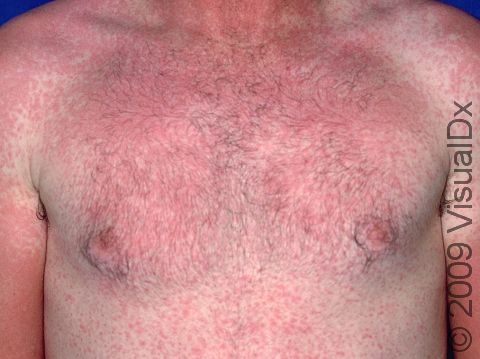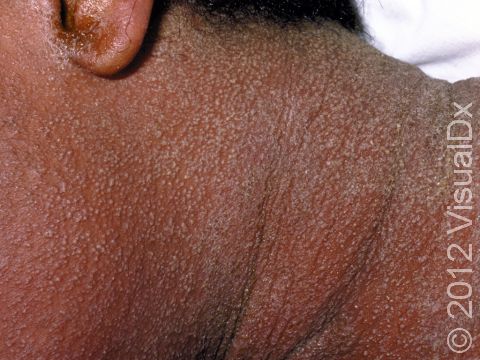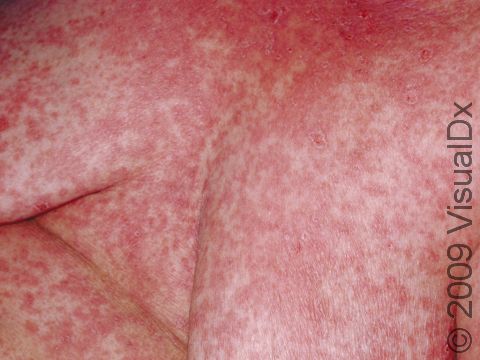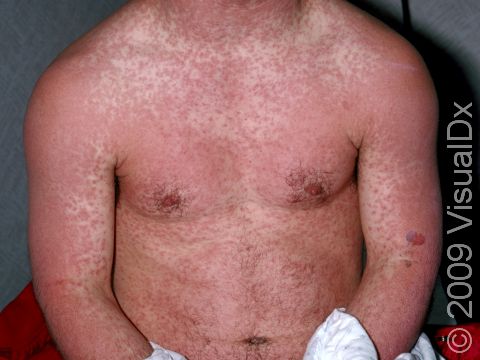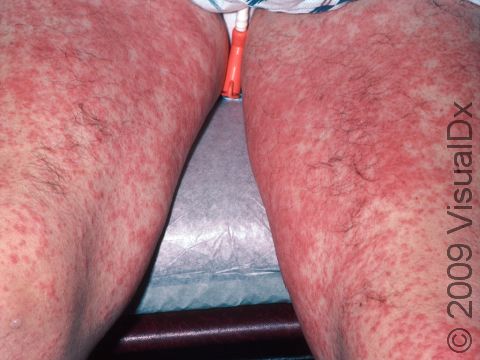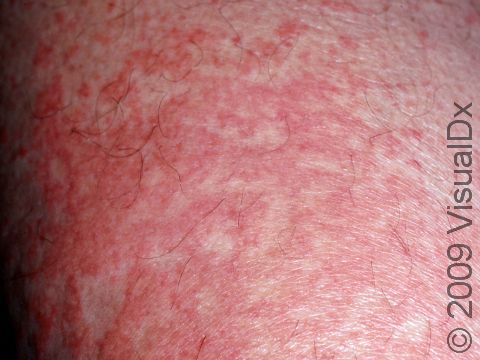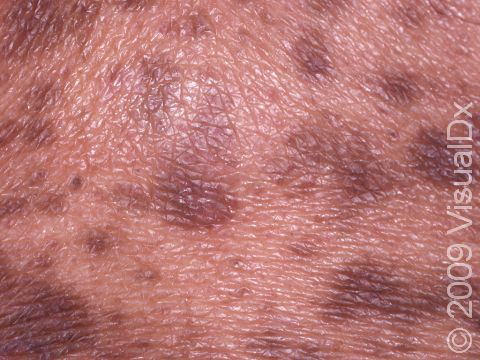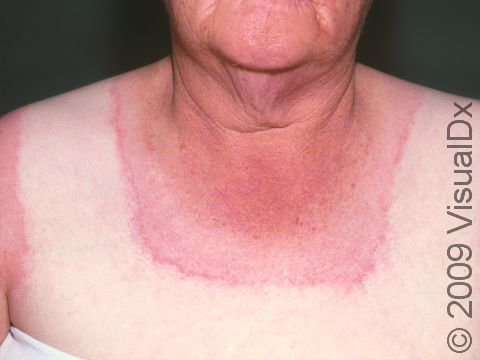Drug Eruption
A drug rash (drug eruption), also known as a drug reaction, is a skin condition caused by a medication. A drug rash can appear in many forms, and any medication can cause a drug rash.
Who's At Risk?
Drug rashes can appear on people of all ages, all races, and of both sexes. However, women are more likely than men to develop drug rashes, and they tend to occur more frequently in elderly people.
Factors that predispose an individual to developing a drug rash include:
- Weakened immune system due to underlying illness or medication
- Underlying infection
- Taking more than 3 medicines daily
Although any medication can cause a drug rash, the most common types of medications that trigger a drug rash include:
- Antibiotics, such as penicillin or sulfa drugs
- Anti-inflammatory medicines, such as ibuprofen, naproxen, or indomethacin
- Painkillers, such as codeine or morphine
- Seizure medications (anti-convulsants), such as phenytoin or carbamazepine
- Chemotherapy agents
- Medicines for psychiatric illnesses (psychotropic medications)
- Diuretics
- Iodine, especially that found in X-ray contrast dye
Signs & Symptoms
Drug rashes can appear as a variety of skin rashes, including pink to red bumps, hives, blisters, red patches, pus-filled bumps (pustules), or sensitivity to sunlight. Drug rashes may involve the entire skin surface, or they may be limited to one or a few body parts.
Itching is common in many drug rashes. However, if fever is present, the skin is tender, or the membranes inside the mouth or the genitalia are involved, then a more serious skin condition may be present.
Self-Care Guidelines
For a widespread or severe drug rash, self-care is not recommended. Call your physician or 911, depending upon the severity of your symptoms.
For a mild or limited drug rash, you may try the following measures:
- Take cool showers or apply cool compresses.
- Apply calamine lotion.
- Take an antihistamine, such as diphenhydramine.
Treatments
If your physician suspects a drug rash, he or she may want to establish the correct diagnosis by performing a biopsy of the lesion. The procedure involves:
- Numbing the skin with an injectable anesthetic.
- Sampling a small piece of skin by using a flexible razor blade, a scalpel, or a tiny cookie cutter (called a “punch biopsy”). If a punch biopsy is taken, a suture or two may be placed and will need to be removed 6–14 days later.
- Having the skin sample examined under the microscope by a specially trained physician (dermatopathologist).
In addition, your doctor may want to perform blood work to look for signs of an allergic reaction.
The best treatment for a drug rash is to stop the medication that is causing it. After discontinuing a medicine, it may take 5–10 days to see an improvement in the skin and up to 3 weeks for the rash to resolve completely.
Note: Stopping a prescription medication should be done only with a doctor’s guidance.
Other treatments that may be helpful include:
- Oral antihistamine pills, such as diphenhydramine, hydroxyzine, loratadine, cetirizine, fexofenadine, or desloratadine, for itching.
- Topical corticosteroid (cortisone) creams or lotions for red, inflamed skin.
- Topical antibiotic ointments for open sores.
Visit Urgency
Whenever you are started on a new medication and develop a rash, you should immediately notify the doctor who prescribed the medicine. If difficulty breathing, rapid heart rate, or the swelling of your tongue, lips, throat, or face accompany the rash, you should seek emergency care.
Prepare a list of all of your medications, including prescription and over-the-counter pills as well as topical creams, vitamins, and herbal or homeopathic remedies for the doctor. Be sure to include medicines that you may take only on occasion. If possible, try to document when you started taking each medication. Also make certain that you know about any previous reactions you might have had to medicines or food.
Trusted Links
References
Bolognia, Jean L., ed. Dermatology, pp.333, 336-337. New York: Mosby, 2003.
Freedberg, Irwin M., ed. Fitzpatrick’s Dermatology in General Medicine. 6th ed, pp.1330, 1334-1336. New York: McGraw-Hill, 2003.
Last modified on October 10th, 2022 at 4:57 pm

Not sure what to look for?
Try our new Rash and Skin Condition Finder
